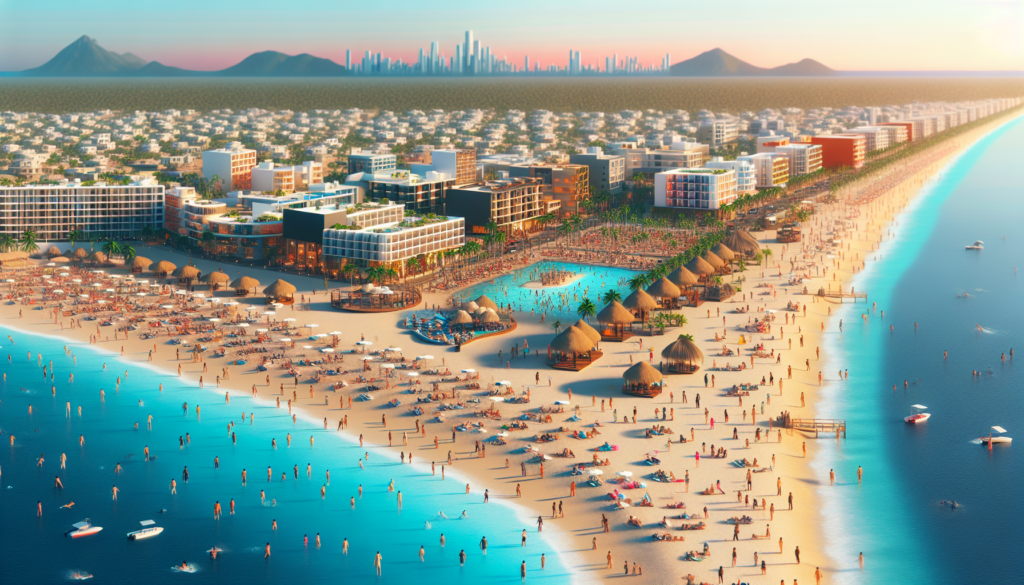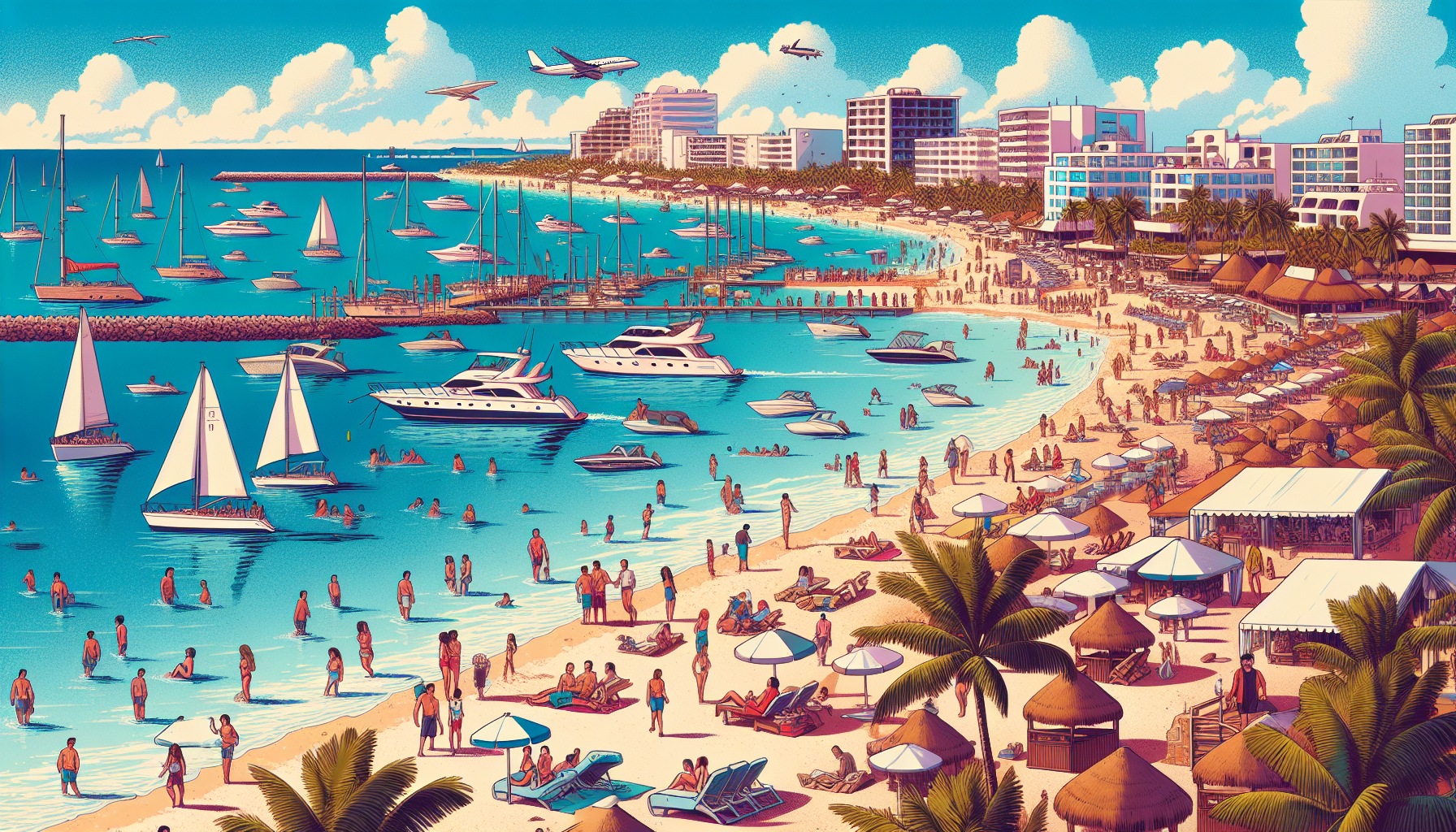In this article, we will explore the economic impact of seaside resorts in Mexico. Whether you own a resort yourself or are simply interested in the tourism industry, understanding the financial implications of these coastal destinations is crucial. By examining various factors such as job creation, revenue generation, and the overall contribution to the country’s economy, we will gain valuable insights into the significance of these resorts. So, let’s take a closer look at how these stunning beachside destinations drive economic growth and create opportunities for both locals and tourists alike.
Overview
Seaside resorts in Mexico have become increasingly popular destinations for both domestic and international tourists. These resorts offer a range of amenities and activities, making them attractive to all types of travelers. The economic impact of these resorts is significant, with tourist spending driving revenue generation and job creation. Additionally, the development of infrastructure and promotion of local businesses contribute to the national economy. However, it is crucial to consider environmental considerations and ensure sustainable growth of seaside resorts in Mexico.
Definition of Seaside Resorts
Seaside resorts are tourist destinations located along coastal areas, offering a range of accommodations, amenities, and attractions for visitors. These resorts typically have access to beaches and offer various recreational activities such as water sports, spa services, and entertainment options. Some characteristics of seaside resorts include the presence of luxury hotels, restaurants, shopping centers, and facilities for outdoor sports and recreation. In Mexico, popular seaside resorts include Cancun, Playa del Carmen, Puerto Vallarta, and Los Cabos.

Growing Popularity of Seaside Resorts in Mexico
Mexico has witnessed a significant increase in the number of both international and domestic tourists visiting seaside resorts. The country’s rich cultural heritage, stunning natural landscapes, and vibrant hospitality industry have contributed to the growing popularity. International tourists are attracted to Mexico’s pristine beaches, diverse marine life, and historical sites, while domestic tourists seek relaxation, family-friendly activities, and luxury experiences. Factors such as increased connectivity, safety measures, and marketing campaigns have also played a role in attracting tourists to these resorts.
Overview of the Economic Impact
The economic impact of seaside resorts in Mexico cannot be overstated. Tourism plays a crucial role in the country’s economy, and seaside resorts contribute significantly to this sector. Direct economic contributions include revenue generated from tourist spending on accommodations, dining, shopping, transportation, and entertainment. Indirectly, the multiplier effect of tourism leads to increased demand for goods and services, benefiting a wide range of industries such as transportation, agriculture, and retail. Furthermore, the development of seaside resorts creates numerous job opportunities, driving employment and income generation.

Importance of Tourist Spending
Tourist spending is a key driver of economic growth in seaside resorts. Visitors contribute to the local economy through their expenditure on accommodations and dining, which directly supports the hospitality industry. Shopping and retail sectors also benefit from increased tourist spending, as visitors often purchase souvenirs, clothing, and other local products. Additionally, transportation services, local guides, and leisure activities such as boat tours, cultural performances, and adventure sports experience a surge in demand due to tourism. A portion of tourist spending is also invested in local attractions and infrastructure development, further contributing to the long-term growth of the region.
Job Creation and Employment Opportunities
The growth of seaside resorts in Mexico has led to the creation of a substantial number of employment opportunities. Directly, resorts and hotels employ a significant workforce in various departments such as housekeeping, food and beverage, guest services, and entertainment. Indirectly, related sectors such as transportation, retail, and tour operators also experience job growth due to the increased demand generated by tourism. Seasonal and permanent jobs are available, providing opportunities for both locals and migrants. Training and development programs within the hospitality industry further contribute to skill enhancement and career growth. Moreover, the promotion of local talent and culture in resorts ensures that the authenticity and uniqueness of the region are preserved.

Infrastructure Development
The development of seaside resorts in Mexico necessitates significant investment in infrastructure. Transportation networks are crucial to ensure easy access for tourists, which includes the expansion and improvement of airports, seaports, and roadways. Construction and renovation of resorts and hotels are ongoing activities, aimed at providing modern and luxurious accommodations for visitors. Additionally, utilities and services such as water, electricity, and waste management systems need to be expanded and upgraded to cater to the growing demand. Public facilities, including parks, recreational spaces, and public toilets, are also improved to enhance the overall visitor experience. The development of infrastructure has a positive impact on the local construction industry, providing business opportunities and employment.
Boost to Local Businesses and Entrepreneurship
Seaside resorts in Mexico have played a significant role in supporting local businesses and fostering entrepreneurship. Small-scale enterprises, including local restaurants, cafes, souvenir shops, and tour operators, receive substantial support from the resorts. These businesses often collaborate with resorts to offer their products and services to tourists, creating a symbiotic relationship. The growth of tourism-dependent businesses, such as car rentals, spas, and water sports centers, has been substantial. Additionally, the hospitality industry provides entrepreneurial opportunities for individuals interested in starting their own lodging facilities or restaurants. Resorts also contribute to the promotion of local crafts and products, encouraging sustainable livelihoods for artisans and creatives in the region.

Contribution to the National Economy
Seaside resorts in Mexico have a significant contribution to the national economy. The influx of international tourists results in foreign exchange earnings, with visitors converting their currency into Mexican Pesos for various expenditures. These earnings contribute to the country’s foreign reserves, improving its financial stability. Furthermore, the revenue generated from tourism directly contributes to the country’s Gross Domestic Product (GDP). Resorts and businesses operating in the hospitality sector also pay taxes, contributing to the tax revenue of the government. The tourism industry’s positive impact goes beyond economic factors, as investments in national infrastructure are often influenced by the demand generated by seaside resorts. Moreover, the development of these resorts helps balance regional economic disparities, as investments are made in previously underdeveloped coastal areas.
Environmental Considerations
While seaside resorts bring economic benefits, it is essential to consider the environmental impact of tourism. Coastal ecosystems such as beaches, coral reefs, and mangroves are vulnerable to the stressors of tourism development. Sustainable practices, including responsible waste management, energy conservation, and protection of natural habitats, are crucial to minimize negative impacts. Resorts can invest in eco-friendly initiatives such as renewable energy sources, water conservation, and wildlife conservation programs. Collaboration with local communities and environmental organizations can also help mitigate the impact of tourism on fragile ecosystems. Balancing economic growth with environmental protection is crucial for the long-term sustainability of seaside resorts in Mexico.

Future Growth Potential of Seaside Resorts in Mexico
Seaside resorts in Mexico have excellent potential for future growth. Emerging tourism trends, such as experiential travel, wellness tourism, and digital nomadism, present opportunities for resorts to diversify their offerings. Beyond the popular tourist destinations, there is scope for expanding into new regions with untapped potential. Luxury resorts targeting high-end travelers can attract high-spending tourists, further boosting the economy. International collaborations and partnerships can also enhance the visibility and reputation of Mexican seaside resorts, attracting a diverse range of visitors. However, sustainable growth should remain a priority, ensuring that the natural and cultural assets that make these resorts attractive are preserved for future generations.
In conclusion, seaside resorts in Mexico have a significant economic impact, driving revenue generation, job creation, and infrastructure development. Tourist spending plays a pivotal role in supporting local businesses and fostering entrepreneurship. The national economy benefits from the contribution of seaside resorts through foreign exchange earnings, GDP growth, and tax revenue. However, sustainable practices and environmental considerations should be prioritized to protect the natural beauty and cultural heritage of these destinations. With proper planning and strategies, the future growth potential of seaside resorts in Mexico is promising, presenting opportunities for development, innovation, and continued success in the tourism industry.
